Community Tip - Want the oppurtunity to discuss enhancements to PTC products? Join a working group! X
- Subscribe to RSS Feed
- Mark Topic as New
- Mark Topic as Read
- Float this Topic for Current User
- Bookmark
- Subscribe
- Mute
- Printer Friendly Page
Solve Block Problem - "S" Shaped Catenary
- Mark as New
- Bookmark
- Subscribe
- Mute
- Subscribe to RSS Feed
- Permalink
- Notify Moderator
Solve Block Problem - "S" Shaped Catenary
I have a boat which is supporting an umbilical (cable) - which is supplying the electrical power and communications to an ROV (remote operated vehicle) which is several hundred metres below the surface of the water. There is a bit of a twist to the problem - because the ROV operator wants to attach weights to the umbilical (at location number A - over maybe 50m of umbilical length) - and he also wants to add small buoyancy modules (at location number B - over maybe 50m of umbilical length). The ROV operator wants to do this - in order to isolate the ships motion from the ROV - so the shape of the umbilical will be an "S" shape (rotated through 90 degrees) - when looked on side ways.
I decided to approach this problem as a "chain" - with a series of links (with each link having its own individual weight to allow for the situation where the umbilical has additional weight - location A (lead weights) - or buoyancy blocks - at location B). I then sought to get equilibrium at each end of each link. I then set out the equations for 16 links - and used the Find function to solve for the 50 unknowns. The equations are non linear as they have sin and cos functions - so using the Find function appeared the only option. So apart from the spreadsheet being - not very slick - I noticed that if I had more than 16 elements - which generated 50 unknowns - the Find function would not work with more than 50 unknowns.
As you can perhaps appreciate - if the umbilical is 2000m long - dividing this up into 16 links - is very rough indeed. Additionally, I would like to input the drag forces on the umbilical - but that is just going to add more unknowns - as this varies with the inclination of each link.
So I am looking for any ideas on how I could
- add more links to get a more "accurate" representation of the "S" shape (rotated through 90 degrees) - when looked on side ways
- how to resolve the 50 unknown apparent limit on the Find function
Many thanks in advance - to positive contributors.
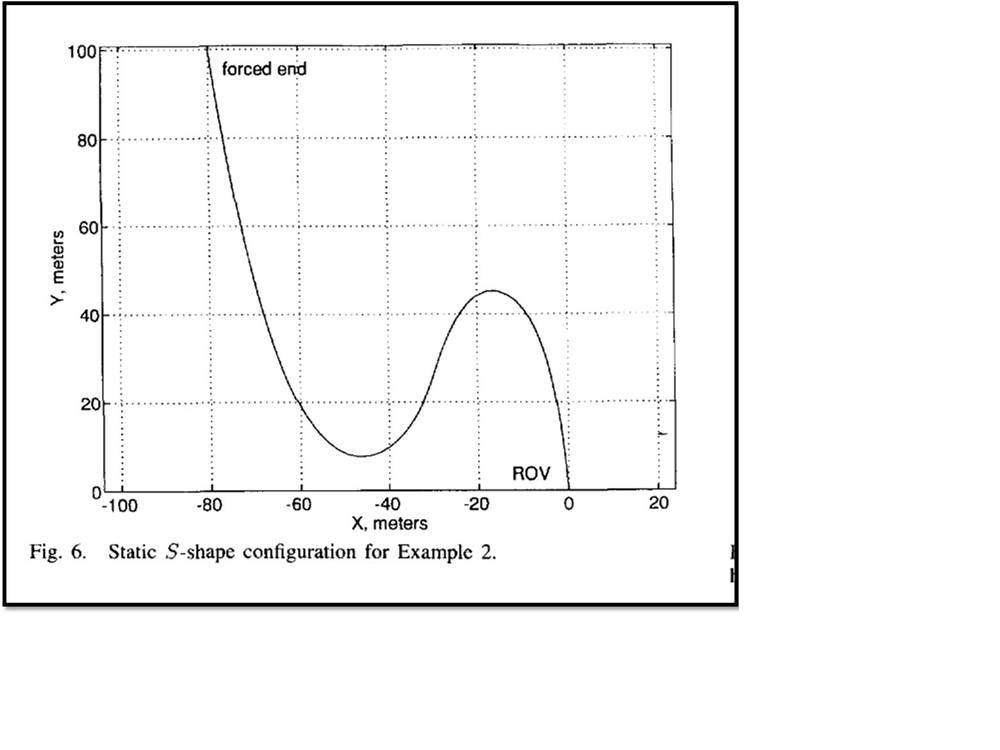
Solved! Go to Solution.
- Labels:
-
Other
Accepted Solutions
- Mark as New
- Bookmark
- Subscribe
- Mute
- Subscribe to RSS Feed
- Permalink
- Notify Moderator
I just realized there's a better approach. New stuff highlighted in green.
Note: Worksheet edited 8:30 pm EST.
- Mark as New
- Bookmark
- Subscribe
- Mute
- Subscribe to RSS Feed
- Permalink
- Notify Moderator
May be this help you
- Mark as New
- Bookmark
- Subscribe
- Mute
- Subscribe to RSS Feed
- Permalink
- Notify Moderator
- Mark as New
- Bookmark
- Subscribe
- Mute
- Subscribe to RSS Feed
- Permalink
- Notify Moderator
Hi Valery,
The program you have attached is for a "standard" "U shaped" catenary - but the problem I have is for an "S" shaped "catenary" - as shown in my original posting. So the problem I have - is much more complex.
So I would welcome any new ideas on how to resolve the proble.
Thanks,
Gordon.
- Mark as New
- Bookmark
- Subscribe
- Mute
- Subscribe to RSS Feed
- Permalink
- Notify Moderator
Thanks Gordon,
It is very interesting problem for Mathcad and me too and not so "much more complex."
See
http://www.2hoffshore.com/documents/papers/Dynamic%20Response%20of%20Lazy%20Wave%20Riser.pdf
- Mark as New
- Bookmark
- Subscribe
- Mute
- Subscribe to RSS Feed
- Permalink
- Notify Moderator
Gordon Durward wrote:
- how to resolve the 50 unknown apparent limit on the Find function
Find(x) where x is a vector
- Mark as New
- Bookmark
- Subscribe
- Mute
- Subscribe to RSS Feed
- Permalink
- Notify Moderator
Valery Ochkov wrote:
Gordon Durward wrote:
- how to resolve the 50 unknown apparent limit on the Find function
Find(x) where x is a vector
I have check it

- Mark as New
- Bookmark
- Subscribe
- Mute
- Subscribe to RSS Feed
- Permalink
- Notify Moderator
Hi Valery,
Thanks once again for the hyperlink to the technical paper on the "Lazy Wave Catenary Riser" - which looks similar to the problem that I have - apart from the fact that the riser cable will be many tonnes in weight - whereas the umbilical that I have is only 80Kg per 1000m in sea water - which is why we will need to put lead weight on our umbilical at the sag bend - which I then feel will then make the assumptions in this technical paper inaccurate.
Thanks also for your second comment - about how to get round the 50 unknown limit using the Find function. I have just tried trying to solve a very simple set of two non linear equations - and defining a 2 x 1 matrix (vector) - and I tried to find the solution - but there must be something obvious I am missing - could you explain - or drop me a quick example. Thanks again.
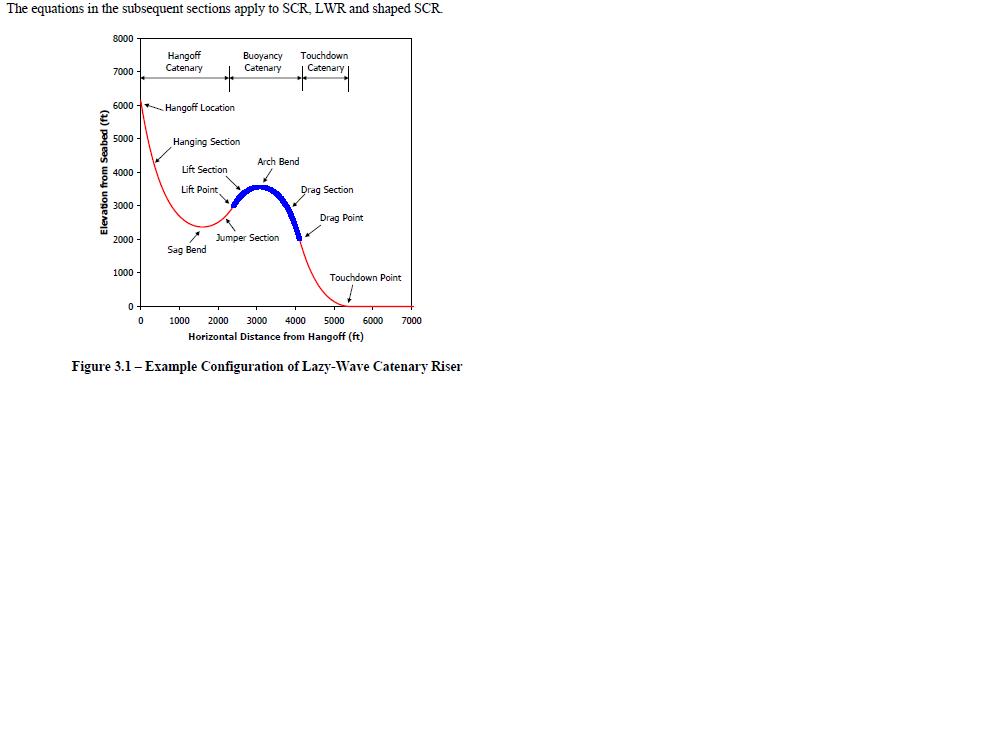
- Mark as New
- Bookmark
- Subscribe
- Mute
- Subscribe to RSS Feed
- Permalink
- Notify Moderator
You welcome, Gordon.
I will be glad to help you. Give me more information (with pictures) about this problem.
And second.
Simple catenary around a neck women - is trivial!
But S-shaped catenary - this is new and elegant.
Let's get a patent on this jewel ![]()
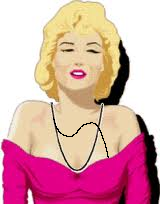
- Mark as New
- Bookmark
- Subscribe
- Mute
- Subscribe to RSS Feed
- Permalink
- Notify Moderator
Hi Valery,
Thanks for your response on this topic of this "s" shaped catenary. What I am strugling with - is trying to get my equations into the Mathcad syntax that Mathcad will accept. If I can understand how to do this - then I feel I should be able to get on with the problem - and add more complexity to the physical problem - by adding in drag forces - along the axis and perpendicular to the axis - of each "chain link".
However, to keep things simple - lets just consider 2 chain links, element 01, and element 02.The chain is supported at point 0, and is under tension at point 2.
The known values are W01, W02, L, FX2, FY2.
The unknown values are, FX0, FY0, FX1, FY1, θ0, θ1
So my three questions are:-
1)How do you vectorize this?
2)If this is vectorized - how many unknowns can I potentially have (50, or 200 , or maybe more)?
3)In a sense - I feel what I am trying to solve is almost a finite element type of problem - so is there a smarter way of doing things?
Look forward to your thoughts.
Kind regards,
Gordon.
Message was edited by: Gordon Durward Typo mistake
- Mark as New
- Bookmark
- Subscribe
- Mute
- Subscribe to RSS Feed
- Permalink
- Notify Moderator
It wiil be good to have a pictire and a start Mathcad-sheet of the problem.
- Mark as New
- Bookmark
- Subscribe
- Mute
- Subscribe to RSS Feed
- Permalink
- Notify Moderator
Hi Valery,
Basically, the problem is the same as I originally posted - but hopefully the picture below will help to re-capture the problem.
My original posting had a Mathcad spreadsheet (see first posting above) - which can solve for 16 "chain links" (50 unknowns). It does not take into account the subsea currents - which I can build into the equilibrium equations in this spreadsheet - once I see how Mathcad can cope with a problem of maybe 100 or 200 "chain links" - depending on what other limitations Mathcad might have.
I hope this brings you up to speed on this problem.
Look forward to hearing your thoughts.
Kind regards,
Gordon.
- Mark as New
- Bookmark
- Subscribe
- Mute
- Subscribe to RSS Feed
- Permalink
- Notify Moderator
Hi Valery,
I was just wondering if you had any further thoughts on how to resolve this particular problem?
Look forward to your thoughts.
Kind regards,
Gordon.
- Mark as New
- Bookmark
- Subscribe
- Mute
- Subscribe to RSS Feed
- Permalink
- Notify Moderator
Sorry, Gordon!
No time to do a big work for this site.
I must finish my new book "Thermodynamic cycles: an introduction with Mathcad" - in Russian and in English
I can do someone only in April.
Sorry
- Mark as New
- Bookmark
- Subscribe
- Mute
- Subscribe to RSS Feed
- Permalink
- Notify Moderator
Search this forum for "finite element", there is a matrix solution capability.
- Mark as New
- Bookmark
- Subscribe
- Mute
- Subscribe to RSS Feed
- Permalink
- Notify Moderator
One picture for the first step of the problem solution:
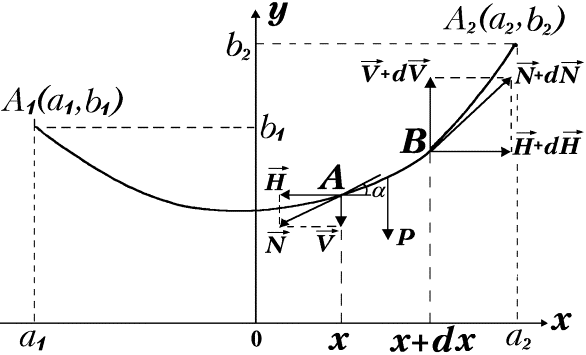
- Mark as New
- Bookmark
- Subscribe
- Mute
- Subscribe to RSS Feed
- Permalink
- Notify Moderator
gordon,
you have picked a very diffcult problem to solve. i did solve a similar problem for anchoring a barge. the catenary was a length of chain and then some wire rope. depending on the force of the barge determined the lenght of the catenary and whether the chain was lifted off the bottom. i divided the problem into parts to define functions. using the functions, wrote several programs to get the different answers. our company has since purchased several programs to solve this problem. our designs involve multiple cables, sizes, lengths,current, waves, etc. attached is the mathcad file for the single cable. good luck.
- Mark as New
- Bookmark
- Subscribe
- Mute
- Subscribe to RSS Feed
- Permalink
- Notify Moderator
Hello,
If I may, I enclose two links that deal a little off topic.
It's in French, but with an automatic translator, you should be out.
Cordially.
Denis.
- Mark as New
- Bookmark
- Subscribe
- Mute
- Subscribe to RSS Feed
- Permalink
- Notify Moderator
Hi Everyone,
I would just like to respond to the recent replies that I have received:-
Thanks Fred for reminding me about the "introduction to FEA beginnings" that Mathcad do - though I have to confess I am struggling with the way it is presented - I would say it should be presented in a better way - as Mathcad is meant to be for engineers - applying mathematics - to solve engineering problems - but thanks anyway.
Thanks Valery for your suggestion in which you appear to be implying that there is a very precise mathematical solution to this "s" shaped catenary problem - and if that is the case - then there is no need for a numerical approach to the problem. Your suggestion revolves around the derivation of a "standard" "u" shaped catenary curve - because as I recal that is the standard technique for deriving the mathematical expression for a "standard" "u" shaped catenary curve. With respect - I have some reservations - since if the amount of buoyancy that is fitted to the "top hump" of the "s" shaped catenary - is not sufficient - then the "top hump" might not exist (or only just) - therefore I feel it might not be a very general solution - and may invalidate some of the assumtions made in linking the "various parts" of the catenary together - like the paper you posted on the 3rd of February.
Thanks David for your thoughts on this problem and the problem you had to try and find a solution too with your chain and wire rope for the barge - but I would like to see the Mathcad spreadsheets that you refer to - which I didn't see in your posting?
Thanks Denis for posting the links to what appears to be a dynamic situation affecting a catenary cable. I will see if there is anything in there that might be of use.
- Mark as New
- Bookmark
- Subscribe
- Mute
- Subscribe to RSS Feed
- Permalink
- Notify Moderator
You welcome! We will glad to see your solution!
- Mark as New
- Bookmark
- Subscribe
- Mute
- Subscribe to RSS Feed
- Permalink
- Notify Moderator
i have alway had a hard time posting to site. not as straight forward as others.
another idea on simplifying the problem. do not treat the float or weights as lumps. the sections with floats or weights can be a uniform weight per foot. we do this all the time during preliminary design. later we will add in the specific locations to account for drag, damping, added mass, etc. it all depends on the problem and what details we need.
cheers
- Mark as New
- Bookmark
- Subscribe
- Mute
- Subscribe to RSS Feed
- Permalink
- Notify Moderator
I will give to my students tomorrow this problem:

- Mark as New
- Bookmark
- Subscribe
- Mute
- Subscribe to RSS Feed
- Permalink
- Notify Moderator
please post your student answers. it would be insteresting to see their approach. check one of the boundary conditions. is the touchdown point tangent? tangent touchdown point are easier to solve.
cheers,
- Mark as New
- Bookmark
- Subscribe
- Mute
- Subscribe to RSS Feed
- Permalink
- Notify Moderator
OK - with animation as here http://communities.ptc.com/videos/1549
A typical problem for my students. We suspended electric wire across the road on two pillars during cold Russian winter. Question. Touches this wire passing cars during hot Russian summer?
- Mark as New
- Bookmark
- Subscribe
- Mute
- Subscribe to RSS Feed
- Permalink
- Notify Moderator
A first step to the solution:
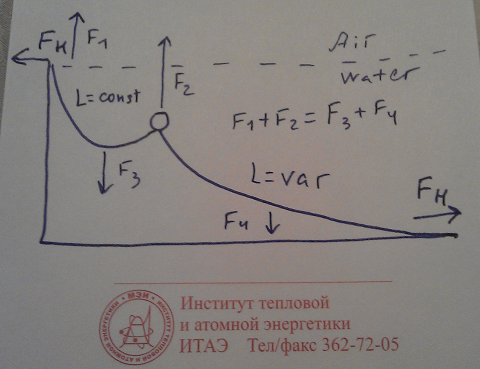
- Mark as New
- Bookmark
- Subscribe
- Mute
- Subscribe to RSS Feed
- Permalink
- Notify Moderator
Valery Ochkov wrote:
I will give to my students tomorrow this problem:
/servlet/JiveServlet/downloadImage/2-198103-46008/2cetenary.png
The first step of my students:

- Mark as New
- Bookmark
- Subscribe
- Mute
- Subscribe to RSS Feed
- Permalink
- Notify Moderator
Valery Ochkov wrote:
Valery Ochkov wrote:
I will give to my students tomorrow this problem:
/servlet/JiveServlet/downloadImage/2-198103-46008/2cetenary.png
The first step of my students:
/servlet/JiveServlet/downloadImage/2-198383-46226/CatStud.png
These are three of my students from Myanmar (Burma).
I read them lectures in English and in Russian.
It is very difficult! Why?
They have their own numbers, and they must be translated into Myanmar language not only words and... numbers too!![]()
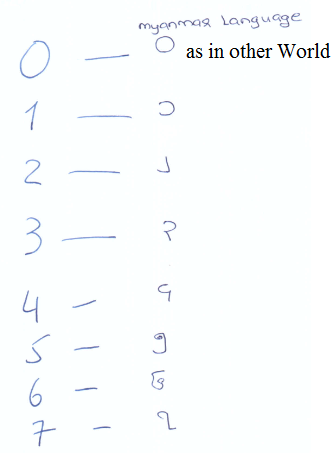
- Mark as New
- Bookmark
- Subscribe
- Mute
- Subscribe to RSS Feed
- Permalink
- Notify Moderator
Hi Everyone,
Thanks Dave for your very well documented mathcad spreadsheet with your chain and wire rope - and yes I agree that "building" the effects from the forces of the lead weights and the buoyancy - and the drag forces - is very difficult.
Hi Valery,
Thanks for your recent posts - and the efforts of your students to solve the problem - and yes I can see it is even more challenging for them - because their number system is different in Burma.
However, the challenge I think is building into the equations drag forces on the subsea cable - where the velocity of the subsea current varies with depth - and the drag forces on the cable vary with the inclination of the cable - and trying to solve this - without resorting to numerical methods?
Kind regards,
Gordon.
- Mark as New
- Bookmark
- Subscribe
- Mute
- Subscribe to RSS Feed
- Permalink
- Notify Moderator
Hi Valery,
Thanks for your recent posts - and the efforts of your students to solve the problem
However, the challenge I think is building into the equations drag forces on the subsea cable - where the velocity of the subsea current varies with depth - and the drag forces on the cable vary with the inclination of the cable - and trying to solve this - without resorting to numerical methods?
Kind regards,
Gordon.
I'll be spending the next class in the MPEI pool ![]()

- Mark as New
- Bookmark
- Subscribe
- Mute
- Subscribe to RSS Feed
- Permalink
- Notify Moderator
A chain is under water. A ponton (buoy) attached to the chain. Air enters into the ponton. The Chain with the ponton does up. We solve numerically (see the vibrations of the chain ![]() )a system with six equations. We can add to the chain new pontons. Each ponton adds to system 3 new equations.
)a system with six equations. We can add to the chain new pontons. Each ponton adds to system 3 new equations.





